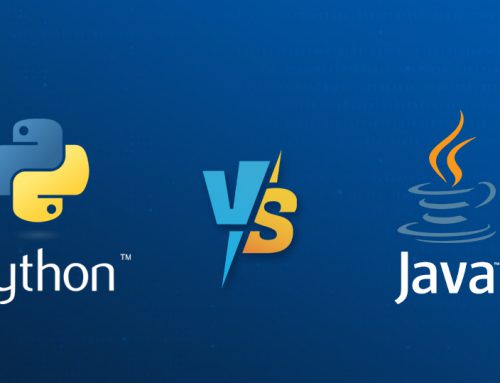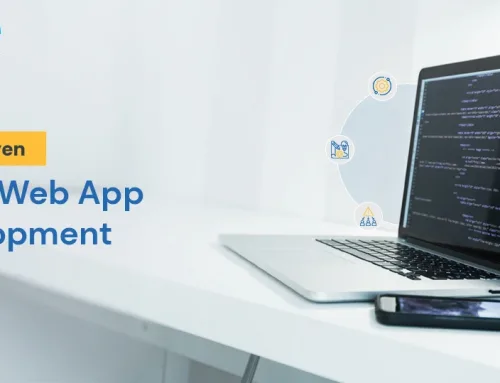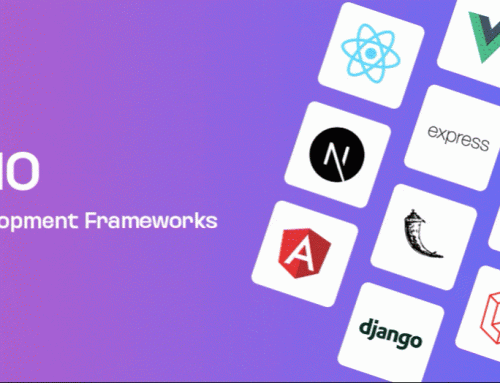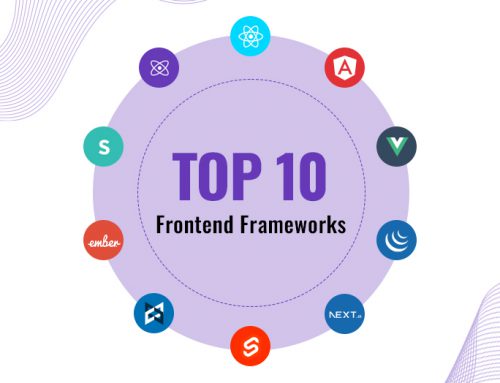Table of Contents
Launching a web application is one thing, but scaling it is an entirely different game. While the initial build may seem predictable, the real costs often surface as your app grows, evolves, and adapts to increasing user demand, system complexity, and business objectives.
No wonder the Application Development Software market is forecasted to reach US$195.77 billion in revenue by 2025, highlighting how vital and expansive this space has become for businesses globally.
Despite the promise of AI-assisted development and off-the-shelf tools, many companies underestimate the true investment needed to scale a web app, from performance upgrades and UX reworks to security, compliance, and technical debt management.
Let’s break down what you’re really signing up for when you are scaling your web app!
Why Planning for Web Application Development Cost Estimates Matters While Scaling
Planning your web app development budget isn’t just a task for the finance team—it’s a strategic conversation that product leaders, CTOs, and founders need to own from day one.
Why? Because in scaling projects, unaccounted costs don’t just affect timelines—they impact the entire growth trajectory.

Building Scalable Web Applications What Enterprise CTOs Should Prioritize
Send download link to:
It’s easy to focus on the initial web application development services cost, as that is one big number that shows up in the proposal. But what most teams overlook are the incremental costs that surface as the app gains users, features, and technical complexity. These aren’t just “nice-to-know” details; they can define whether your platform is scalable or stuck.
Key Points That Usually Get Missed:
- Feature creep: As the product scales, new business needs surface. Each added feature isn’t just dev time—it’s design, testing, security, and maintenance.
- Performance optimization: What worked for 500 users may buckle under 5,000. Scaling infrastructure (servers, CDNs, caching layers) adds cost that’s often invisible at launch.
- Technical debt: Rushed MVPs or short-term decisions often pile up hidden inefficiencies, which later require rewrites or re-architecture, usually at the worst possible time.
- Compliance and security: Especially in sectors like healthcare or finance, the cost of scaling includes ensuring your app is legally and ethically sound as user data grows.
- Team bandwidth: More users mean more bugs, more support, more stress. Scaling a web application often means scaling your development, QA, and support teams, too.
Breaking Down Web App Costs by Scope & Scale
As your web project grows in size, ambition, and user volume, the web application development cost often scales faster than expected. Here’s a refined breakdown tied to hidden scaling challenges, with realistic cost brackets grounded in industry analysis:
1) Simple Apps: Starting Small, Thinking Big
- What you get: Landing pages, informational dashboards, calculators, or basic login workflows.
- Typical cost range: $15,000–$25,000
- Scaling pitfall: These apps are lightweight at launch, but adding real-time features, analytics, or integrations later can significantly inflate the budget.
2) Medium Complexity Apps: Growth-Stage Platforms
- What you get: Business tools like CRMs, internal portals, eCommerce stores, or single-page applications with several integrations.
- Estimated range: $15,000–$60,000
- Scaling challenge: New features, compliance needs, UI/UX redesigns—plus infrastructure upgrades—can push cost well past the upper end of this bracket.
3) Complex / Enterprise Applications: Built to Scale
- What you get: SaaS platforms, real-time dashboards, microservices setups, multi-user roles, advanced security, and custom architecture.
- Starting point: Minimum $50,000; often reaching $100,000–$250,000 or beyond
- Hidden cost zones: Technical debt, performance bottlenecks, autoscaling architecture, microservices, and continuous deployment pipelines can raise the cost exponentially as usage grows.
Why Initial Estimates Aren’t Enough
Many founders and development teams underestimate how complexity multiplies over time. Here’s why scaling often costs more than it looks upfront:
- Feature creep becomes standard: As the product gains traction, stakeholders request features that add layers of design, testing, integration, and deployment, significantly increasing the total cost.
- Infrastructure scales non-linearly: Server resizing, database sharding, autoscaling setups, and load balancing for performance often trigger outsized infrastructure costs.
- Performance testing and upgrades: Tools such as Redis caching, load testing, and failover systems are necessities at scale, each adding cost to QA, DevOps, and hosting.
- Technical architecture upgrades: Moving from a monolith to microservices or a distributed architecture can incur steep developmental and operational overheads
Takeaway for Leadership & Strategy
For project leaders, this is where web application development cost planning becomes strategic rather than tactical. Here’s what to keep in mind:
| Complexity Tier | Typical Cost Range | Scaling-Related Risk |
|---|---|---|
| Simple App | $15K–$25K | High—any new feature often requires rework |
| Mid-size App | $15K–$60K | Medium—scope changes and redesigns add up fast |
| Enterprise Apps | $50K–$250K+ | Very high—scaling infrastructure, architecture costs, and debt management become major budget drivers |
A good thumb rule: always anticipate at least 10–20% above your base estimate to accommodate the hidden costs that emerge with growth.
Understanding Web App Development Cost Structures
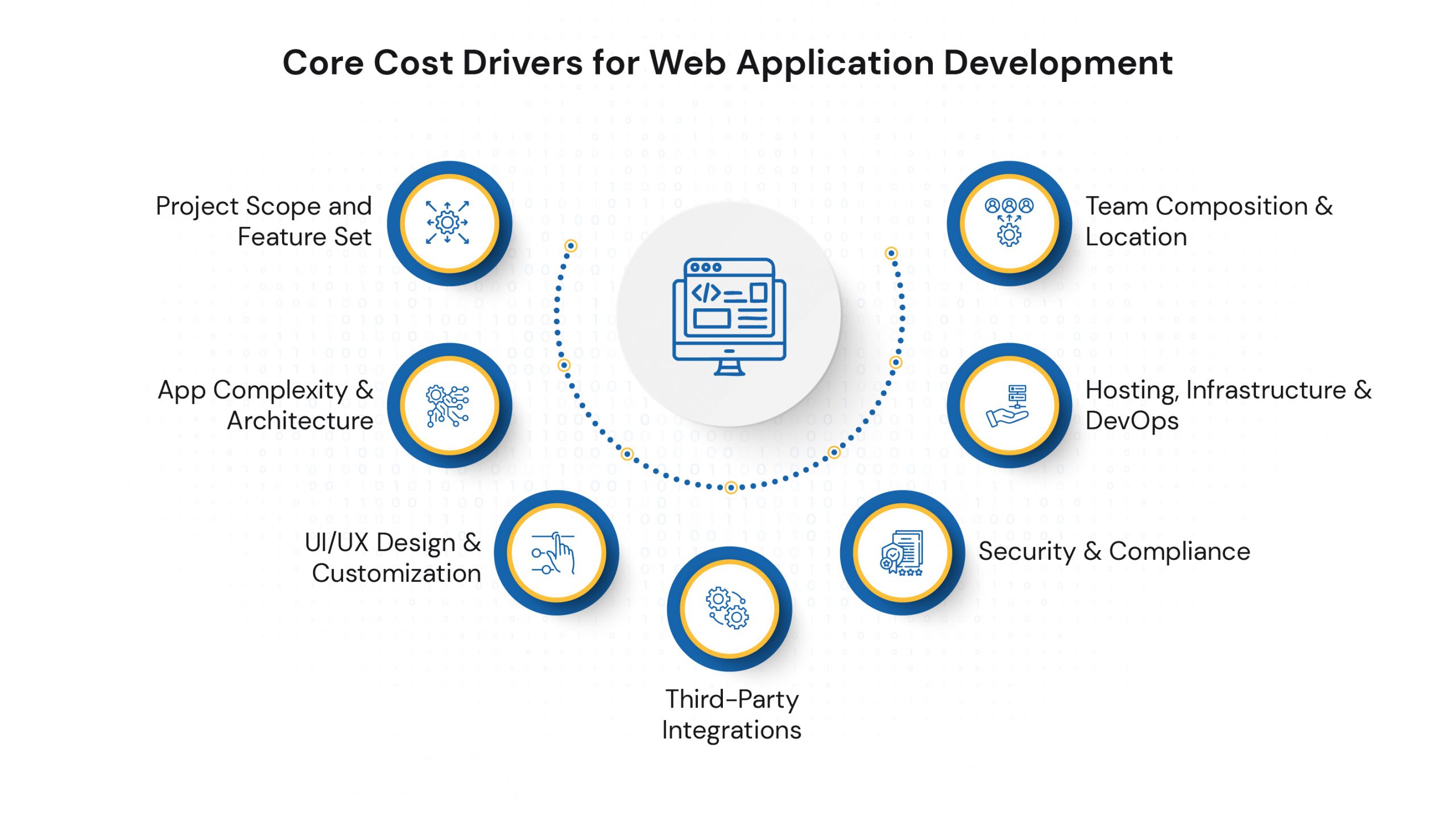
Not all web applications are built equal, and neither are their price tags. Whether you’re building a lightweight customer portal or a full-scale SaaS product, the cost of web application development is shaped by a handful of key factors.
Let’s break down the core cost drivers that determine the final development investment.
-
Project Scope and Feature Set
The broader your application’s functionality, the more effort it takes to build, test, and maintain. A simple blog platform or internal dashboard may cost significantly less than a multi-user, role-based application with real-time data syncing.
| A basic task management tool might need CRUD (create, read, update, delete) operations and user auth. But a scaled version may include integrations, analytics dashboards, notifications, and offline access—all of which add to cost. |
-
App Complexity & Architecture
As features multiply, so does architectural complexity. Will you need microservices for independent scalability? Event-driven architecture for real-time updates? Multi-tenant capabilities? These choices have long-term implications on both performance and cost.
| Highly scalable applications often require decoupled front-end and back-end (e.g., using React + Node.js or Next.js + microservices) along with database scaling strategies like sharding or read replicas. |
-
UI/UX Design and Customization
Well-designed user interfaces aren’t just about aesthetics—they affect retention, usability, and accessibility. Custom interfaces, animations, and responsive layouts increase both design and development hours.
| According to Forrester Research, a well-designed UX can increase conversion rates by up to 400%. That’s why design is not an afterthought—it’s a cost center with ROI potential. |
-
Third-Party Integrations
Payment gateways, CRMs, analytics, cloud storage, and AI plugins—integrations save time, but they still require configuration, testing, and often, recurring costs.
| Complex integrations like ERP systems or secure APIs can introduce both technical and compliance challenges. |
-
Security & Compliance
Especially important in healthcare, finance, and eCommerce sectors, security features like end-to-end encryption, audit logs, and role-based access are non-negotiable and time-consuming to implement correctly.
| Compliance frameworks like HIPAA, GDPR, or SOC 2 involve continuous monitoring and documentation, not just one-time features. These requirements substantially increase development timelines and cost. |
-
Hosting, Infrastructure & DevOps
Scalable applications often need cloud infrastructure with auto-scaling, CI/CD pipelines, monitoring tools, and backups. While platforms like AWS, Azure, and GCP offer pay-as-you-go models, high-availability systems and international data delivery do come at a cost.
| Invest early in modular infrastructure and deployment automation—it reduces cost over time, especially in scaling projects. |
-
Team Composition & Location
Whether you choose an in-house team, a freelance developer, or a specialized agency affects both pricing and outcome. Senior developers or architects command higher rates, but they can also reduce rework and tech debt later on.
| Outsourcing to regions with lower labor costs (e.g., Eastern Europe, South Asia) can reduce short-term spending, but leaders should balance that with quality, communication, and IP considerations. |
Hourly vs Fixed Pricing Models: What’s Best for Your Web Application Development?
When budgeting for your web application project, one of the most important early decisions is how you’ll pay for the work. Do you go with a fixed quote that promises predictability? Or do you opt for hourly billing that offers more flexibility?
Each pricing model comes with trade-offs. The right choice often depends on how well-defined your project is and how open you are to change during the development journey.
Fixed Pricing Model [Predictable, But Inflexible]
Fixed pricing works best when every requirement is clear upfront. But in a rapidly evolving business environment, that’s rarely the case. With fixed pricing, you get a set budget for a clearly scoped project.
Best suited for:
- MVPs with well-defined features
- Short-term or pilot projects
- Budget-conscious teams with minimal room for scope change
| Pros | Cons |
|---|---|
| Predictable cost (easy for finance teams to plan) | Inflexible—any scope changes require new agreements |
| Clear scope and timeline | Can lead to compromises in quality or speed if unforeseen issues arise |
| Low management overhead once underway | May discourage innovation mid-project |
Hourly (Time & Material) Pricing: Flexible, but Requires Oversight
According to Deloitte, agile projects that use time-and-material billing are 28% more likely to deliver business value—but only when stakeholders stay involved throughout. Here, you pay based on actual hours spent, like hiring a team on a per-hour or per-sprint basis.
Best suited for:
- Evolving or long-term projects
- Startups and scaling businesses
- Agile development environments
| Pros | Cons |
|---|---|
| High flexibility—adapt to change as needed | The final cost is uncertain and can rise with scope changes |
| Greater collaboration between teams | Requires strong project and budget management |
| Encourages innovation without redrawing contracts | Can feel open-ended without regular checkpoints |
The Hybrid Approach – The best of both worlds
A flexible architecture ensures cost predictability in the beginning and adaptability as you grow. Many tech partners today offer hybrid models, where:
- Discovery & planning are fixed
- Development is hourly or milestone-based
- Support & maintenance shift back to fixed or retainer models
Web application development isn’t a one-time cost; it’s a long-term investment. The right model supports not just delivery, but evolution.
Get an Accurate Web App Cost Quote

Every web application project is unique, shaped by your business goals, the complexity of features, user needs, and long-term vision. That’s why getting a truly accurate web application development cost quote requires more than a quick number based on a template or a ballpark figure.
At this stage, what most businesses need is clarity, not just around “how much,” but also “why that much.”
A good estimate should consider:
- Your current digital maturity (Are you building from scratch or modernizing?)
- The scale of the application (User load, integrations, features, admin panels, etc.)
- The expected timeline and team structure
- Your preferred tech stack or cloud environment
- Any potential for scalability in later phases

Building Scalable Web Applications What Enterprise CTOs Should Prioritize
Send download link to:
The goal isn’t just to quote — it’s to guide you toward smarter technical decisions that align with both your budget and growth plan.
When you speak with a technology partner like us, we take time to understand your exact business needs and work through a transparent estimation process. This includes discovery calls, project scope refinement, and early solution architecture, so you’re not surprised later by hidden costs or scope mismatches.
A detailed cost estimate usually reflects the quality of thinking behind the product, not just the price tag.
Whether you’re a startup planning your MVP or a growing company scaling your core platform, a reliable estimate isn’t just a planning tool — it’s a key part of risk management.













